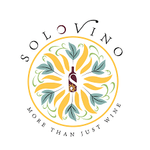Having just been at the first major wine tasting of the year...with a cacophony of slurping, glass clinking and animated discussion comes snippets of wine terminology....Wine descriptors— what are they and how do you interpret them?
Terms used to describe the aromas, flavors, textures, and overall experience of wine come from a combination of sensory perception, winemaking practices, and cultural context. Here’s a breakdown of where these descriptors actually come from, along with examples:
Different types of Grapes
Different grape varieties have characteristic flavor profiles and aromas that are inherited from the genetics of the grape itself. These descriptors can be specific to certain grape types and are often a direct reflection of the natural compounds found in the grapes.
..some examples...
- Cabernet Sauvignon: Blackcurrant (cassis), blackberry, tobacco, green bell pepper, cedar.
- Pinot Noir: Red fruit (cherry, raspberry), mushroom, earthiness, floral notes (rose, violet).
- Chardonnay: Green apple, citrus, butter, vanilla (when oak-aged), toast, pineapple.
Environmental factors
The unique combination of soil, climate, altitude, and other environmental factors in which the grapes are grown. These elements impact the wine’s characteristics and can be reflected in descriptors that speak to the land’s influence on the wine. These can vary incredibly from country to country but also even in a single vineyard...(think of the varied styles in the slopes of Burgundy...with historically varied slope make ups..manufactured by water movement/ice movement and sol content...but here are some examples
-
Minerality: Found in wines grown in specific soil types (chalky, slate, volcanic) and often described as "flinty," "steely," "wet stone," or "salty."
- Chablis (France, Chardonnay): Flinty, mineral notes due to the Kimmeridgian limestone soils.
-
Earthy: Soil-driven descriptors, often found in wines from more rustic, cooler climates.
- Burgundy Pinot Noir: Earthy, mushroom, truffle, and underbrush notes, reflecting the forested terroir.
The skill or style of the winemaker
The techniques used during fermentation, aging, and processing can introduce specific flavors and aromas into the wine. Some descriptors are linked directly to how the wine was made and how the maker wanted to create a particular style...some more advance methods could be carbonic maceration or saignee press with some Provence roses...but here are some of the main uses
...some examples...
-
Oak Aging: The use of oak barrels can contribute flavors of vanilla, toast, caramel, spice, or smokiness, depending on the type of oak (French, American, etc.) and the level of toast on the barrel.
- Chardonnay (oak-aged): Butter, vanilla, toasted almond, smoke.
-
Malolactic Fermentation: This process softens the wine’s acidity and can produce creamy, buttery flavors.
- Chardonnay (Malolactic fermentation): Butter, cream, hazelnut.
Fermentation & Yeast Influence
The type of yeast and fermentation process can impact the aromatic profile of a wine. Wild yeast fermentation can create more complex or “funky” flavors, while cultured yeast tends to produce more predictable aromas.(These are the main industrial types used by major producers to obtain a flavour that their brands are know for). Biodynamic and organic producers may use naturally occurring yeasts from the vineyard,grape skins or surrounding area for wild fermentation - these are not always consistent in producing "a set flavour" profile)
Examples:
-
Spicy/Clove/Pepper: Certain yeast strains or fermentation temperatures can produce spicy or peppery notes.
- Syrah/Shiraz: Black pepper, clove, or spice, often attributed to the grape variety and fermentation conditions.
-
Funky: Wines fermented with wild yeast or in certain conditions might develop “funky” aromas.
- Natural wines: Notes like barnyard, leather, or even a "bretty" (Brettanomyces) funk.
-
Saccharomyces cerevisiae is the most common yeast used for fermentation of Sauvignon Blanc, but it may be selected in specific strains that accentuate fruity and floral notes - as in New Zealand S.Blancs
Ageing wines
The way wine is aged—whether in stainless steel, concrete, or oak barrels—greatly affects its flavor profile. The aging process, whether in the barrel or bottle, also influences texture and mouthfeel.
-
Oak Aging: Barrel aging imparts flavors like vanilla, toast, and spice.
- Cabernet Sauvignon (oak-aged): Vanilla, cedar, tobacco, and leather from oak.
- different types of woond and different uses will impart different characters...think America,French,slovenia barrels
- New stye include ceramic and concrete eggs for minerality
-
Bottle Aging: Over time, wines develop tertiary flavors, often described as complex, savory, or earthy notes that come from prolonged aging.
- Red Bordeaux (aged): Leather, tobacco, truffle, dried fruit, and earth.
Human Perception
Wine descriptors also come from the way humans perceive and interpret the flavors and aromas in the wine. Trained wine tasters or sommeliers are often better at identifying specific compounds in wine and giving them descriptive names based on shared sensory experiences.
-
Fruity: Most wines will have some level of fruitiness, but specific descriptors can come from the type of fruit perceived.
- Riesling: Lime, green apple, peach, apricot.
- Zinfandel: Ripe raspberry, blackberry, fig.
-
Herbaceous: Wines, especially from cooler climates or specific regions, can show vegetal or herbal notes.
- Sauvignon Blanc: Grass, bell pepper, cut hay, gooseberry.
Cultural and Historical Context
The vocabulary used to describe wines is often a product of historical wine culture and established conventions. Over time, wine professionals (critics, sommeliers, winemakers) have developed standardized terminology to help communicate wine experiences to a broad audience.
Examples:
- Bordeaux and Tannins: The tannins in Bordeaux wines (usually from Cabernet Sauvignon and Merlot) are often described as "structured" or "firm," which reflects the region's historical emphasis on wines with age-worthiness and balance.
- In some countries where Old world wines are perceived as being Tannic - they are often described as being "Dry" - a perception that can be attributed to a wine being more tannic/acidic
-
Champagne and “Bready” Notes: The traditional method of sparkling wine production (secondary fermentation in the bottle) creates "bready," "toasty," or "biscuity" notes due to the yeast autolysis process. This is especially common in Champagne and other sparkling wines.
- Champagne: Brioche, biscuit, toasted bread.

